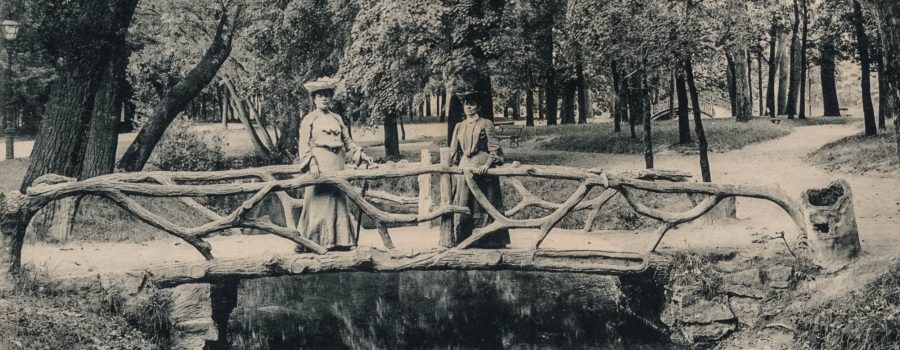Faux bois is a charming art form that has a special place in history and in my heart. In fact, I love it enough to create faux bois furniture as my full-time profession. For me, the history of concrete faux bois is not a list of random names and dates: It’s the story of a rapidly changing French society from 1867 to 1920, fueled by dreams and new technologies, and of a clever gardener who accidentally changed civilization forever.

Basic Definition
Faux bois means “false wood” in French. If you Google “faux bois” you’ll not only see the concrete version, but everything from wood-grained wallpaper to resin planters designed to resemble tree trunks.
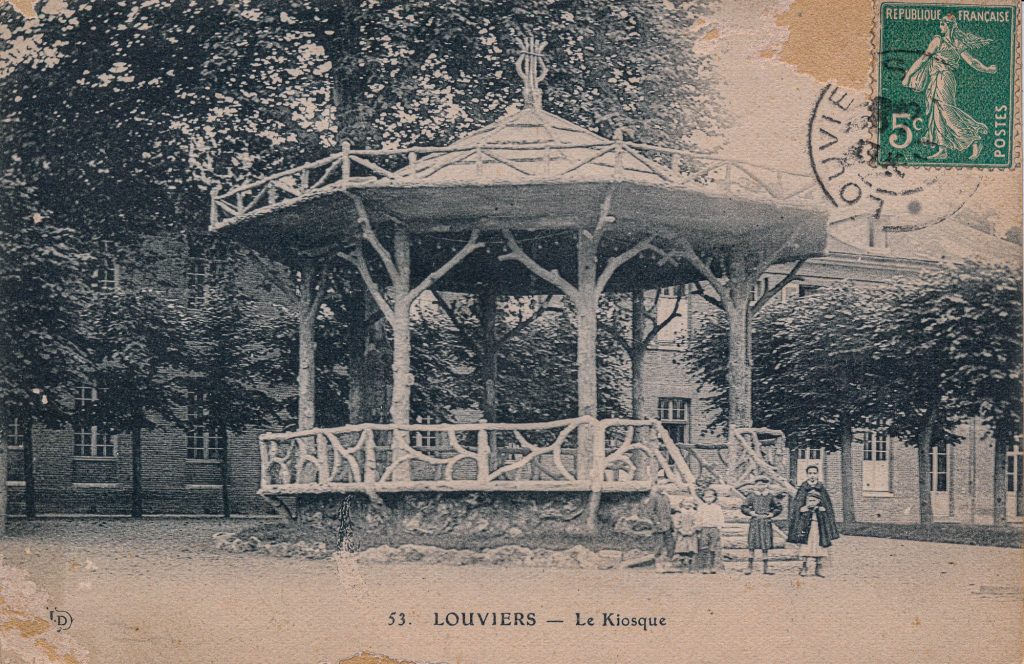
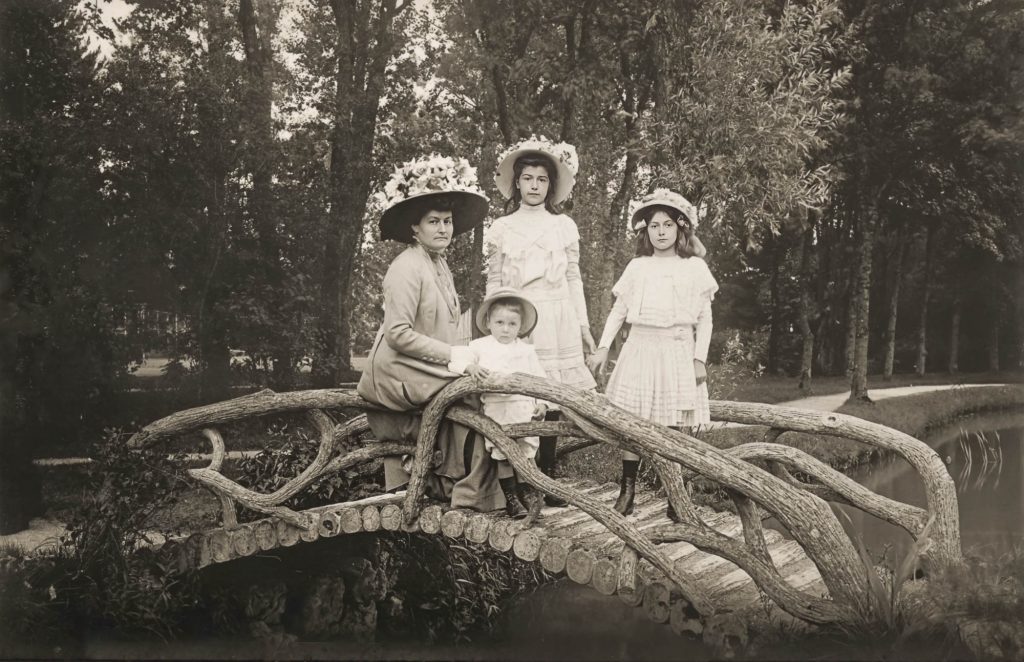
Historical Definition
In a historical sense, faux bois has, and always will, (at least to me), refer to an art form that originated in France in the mid 1800s. It included a group of artisans who sculpted cement onto metal armatures, giving the illusion of free-flowing branches and trees. This creative technique was used to make everything from faux bois benches, chairs, and tables to bridges, railings, balconies, kiosks, and other architectural elements— for both public parks and private homes and gardens.
Through the lens of history, faux bois is often (and unfairly, in my opinion) relegated to the category of “folk art,” “grotesques,” “novelties,” or “garden follies.” It was so much more than that! Faux bois once adorned the most elegant parks and grand estates in France and Belgium. What many people don’t know is that it also was an early proof of concept for a building innovation that changed the world forever—metal reinforced concrete.
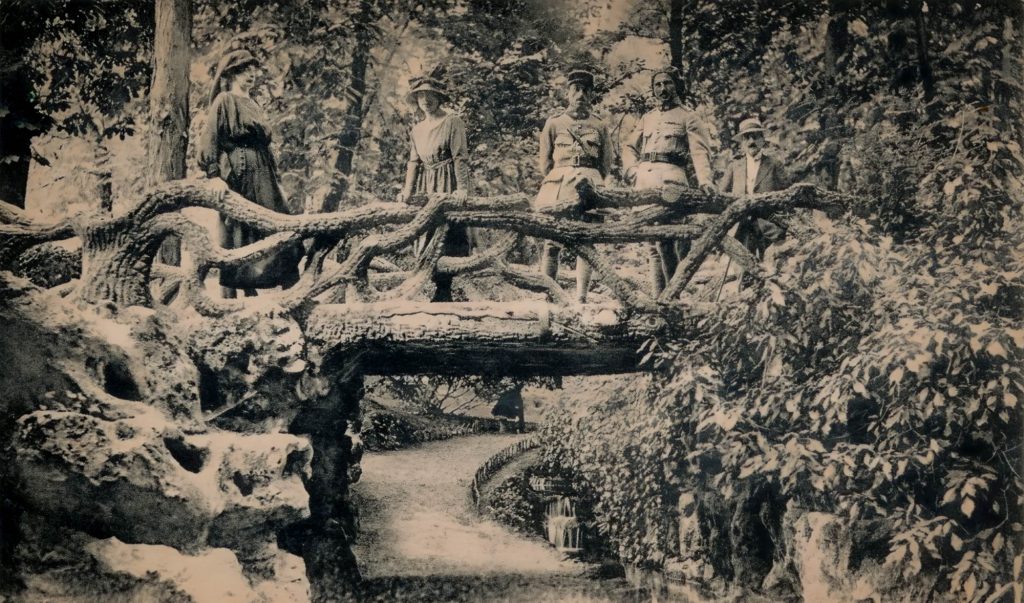
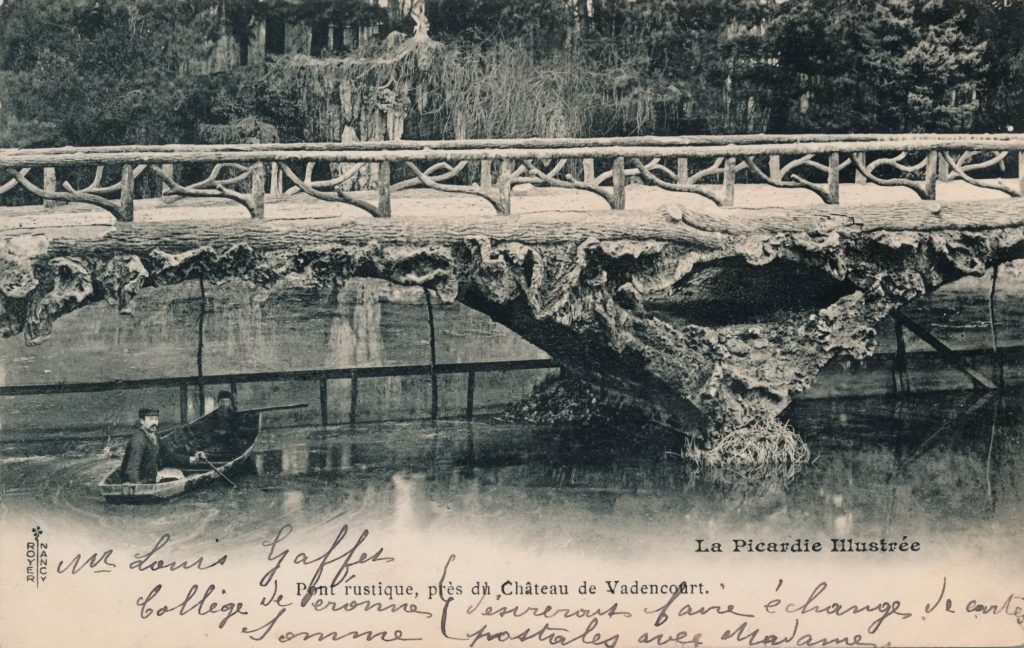

The Gardener Who Changed the World
Like many innovations that change lives, reinforced concrete had humble and strangely specific beginnings. The first person who came up with a very practical use for ferrocement in the mid 1800s (i.e. iron mesh embedded in concrete) was not an inventor, materials scientist, or even a builder.
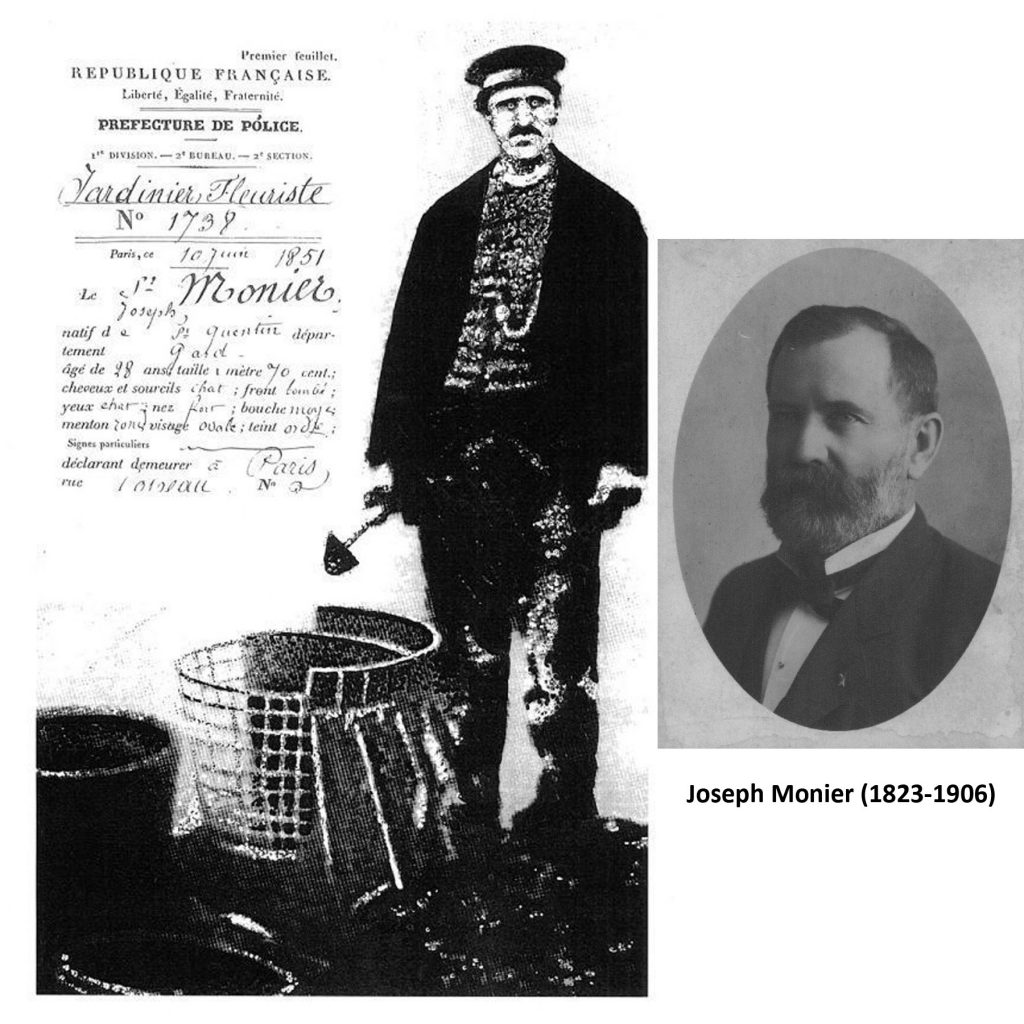
Joseph Monier, a French gardener, didn’t set out to alter the course of civilization. He just wanted to build a better planter because wooden planters rotted and ceramic ones constantly cracked during freeze/thaw cycles.
As a master gardener, Monier understood plants. He knew that the fibers in plants made their stems strong enough to withstand all kinds of weather conditions. He had an idea that if he combined iron mesh with a recently invented material called Portland Cement (British invention in 1824, enhanced in 1845), he could make planters that would hold up to those severe freeze thaw cycles. It would save him time and aggravation if he didn’t have to repot those orange trees so often! His experimentation paid off.
France proudly introduced Monier’s ferrocement planters to the world at the Paris Exhibition of 1867. Builders from all over the world who attended that Exhibition realized that this new technology could be used to modernize the infrastructure in their countries. They could build high rise buildings, bridges, and better transportation systems. Monier’s proof of concept for metal reinforced concrete ushered in a new era in construction around the world.In 1875 Monier designed and built the first reinforced concrete bridge across a moat at the Château de Chazelet. What’s exciting to me is that it was a faux bois bridge as well, making him in my mind, the father of the art of concrete faux bois.
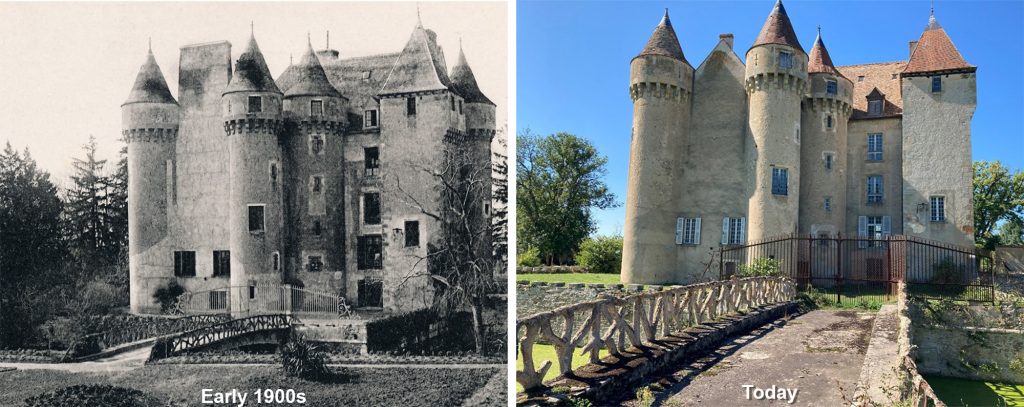
The Rise of Faux Bois Artisans
As much as I believe that faux bois should be considered a stand-alone art form, it is nearly always placed into the broader French masonry tradition of “rocaille” — the art of sculpting rocks out of cement. Before the invention of Portland cement and reinforced concrete, rocailleurs (or, rock makers) were the artisans who sculpted decorative rocks and grottos for public parks using a weak and unruly mixture lime and sand. (The secrets to strong cement invented by the Roman Empire were lost during the Middle Ages.)
Sculpting Portland cement onto a metal framework was a game changer for these concrete artisans. They were no longer limited to making fake rocks or sculpting bas relief false wood planks on the sides of buildings, using concrete with the same limitations as plaster. They were free to create beautiful faux bois bridges, railings and furniture with twisting, realistic branches that could stand alone as unique, compelling, and functional sculptures. The rocailleurs who embraced this newly invented art-form took their sculpting skills to the next level, and their creations elegantly blended into the surrounding nature.
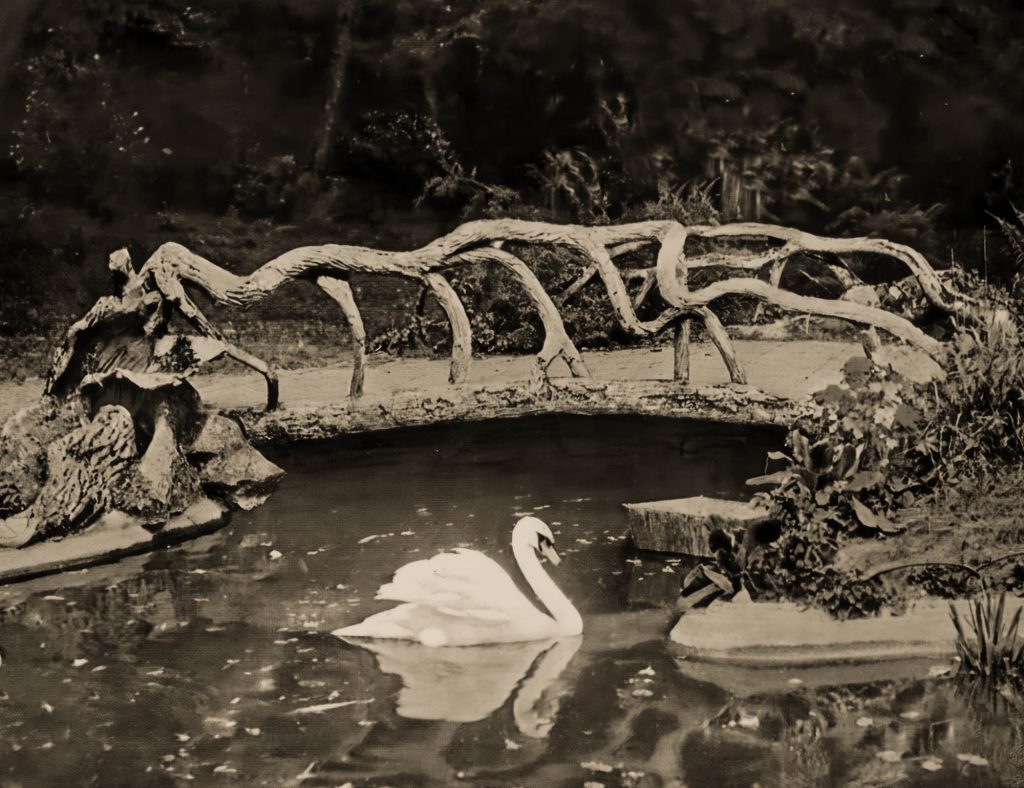
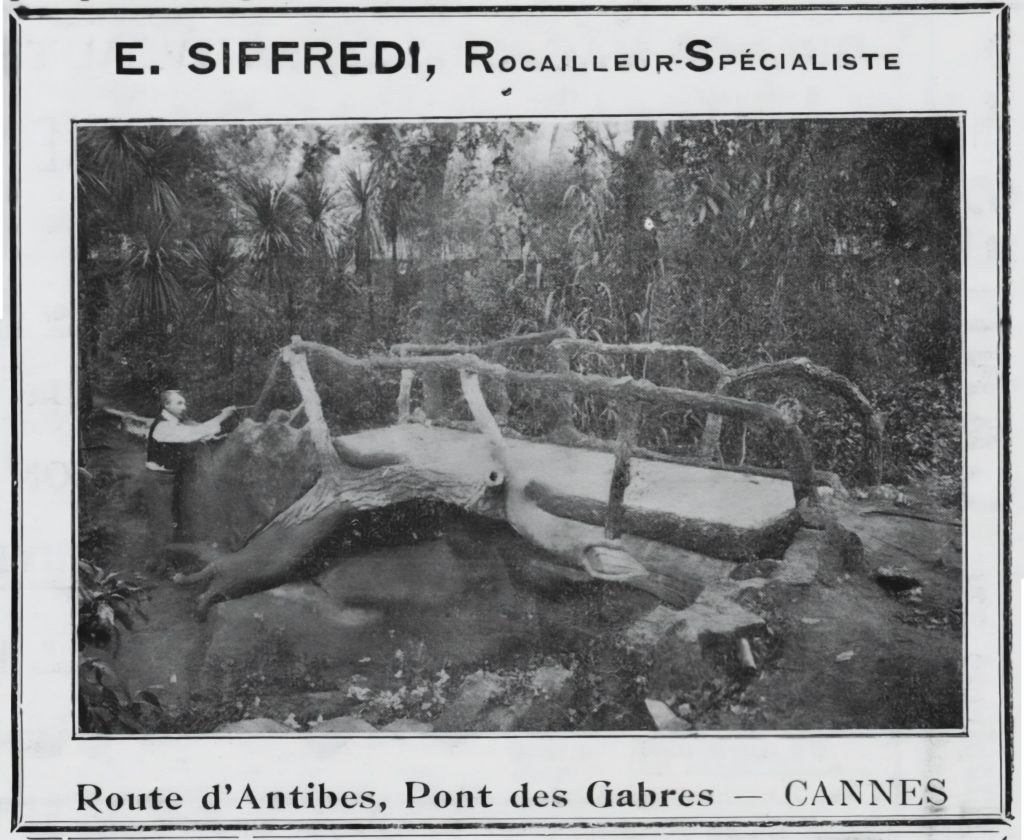
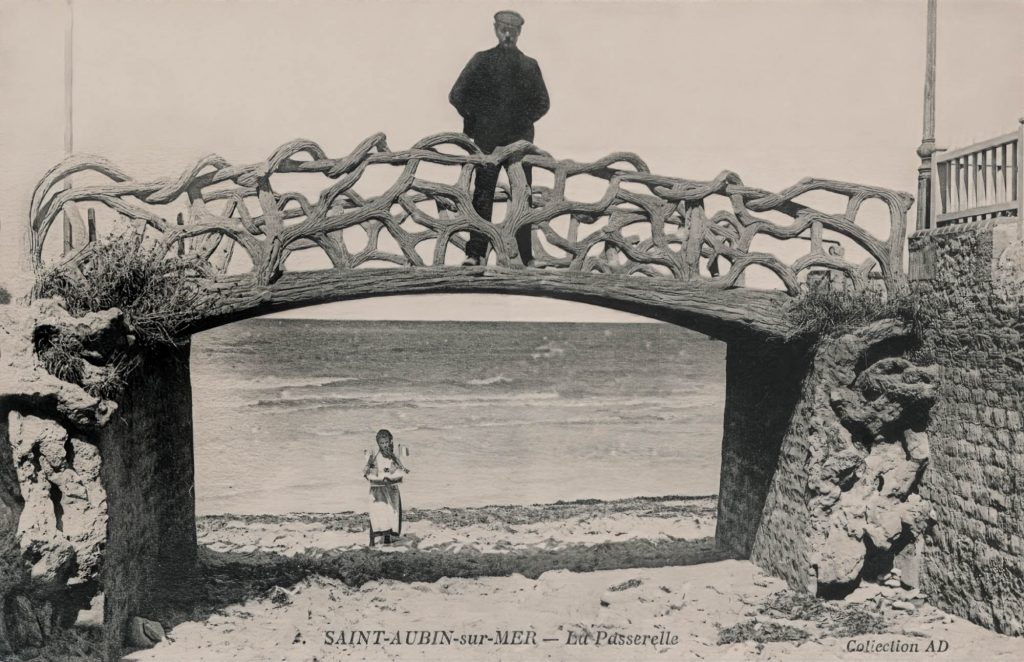
Faux Bois in Major Parks—escaping the madness of city life
The second Industrial Revolution lured many people from the countryside to the cities in search of factory work. In the mid-to-late 1800s, public parks and gardens were places of refuge where everyone, regardless of social status, could escape the noise and other challenges of overcrowded cities.
The French government gave top landscape architects a lot of public money to renovate Paris area parks such as Buttes-Chaumont and Montsouris, as well as many other smaller parks.

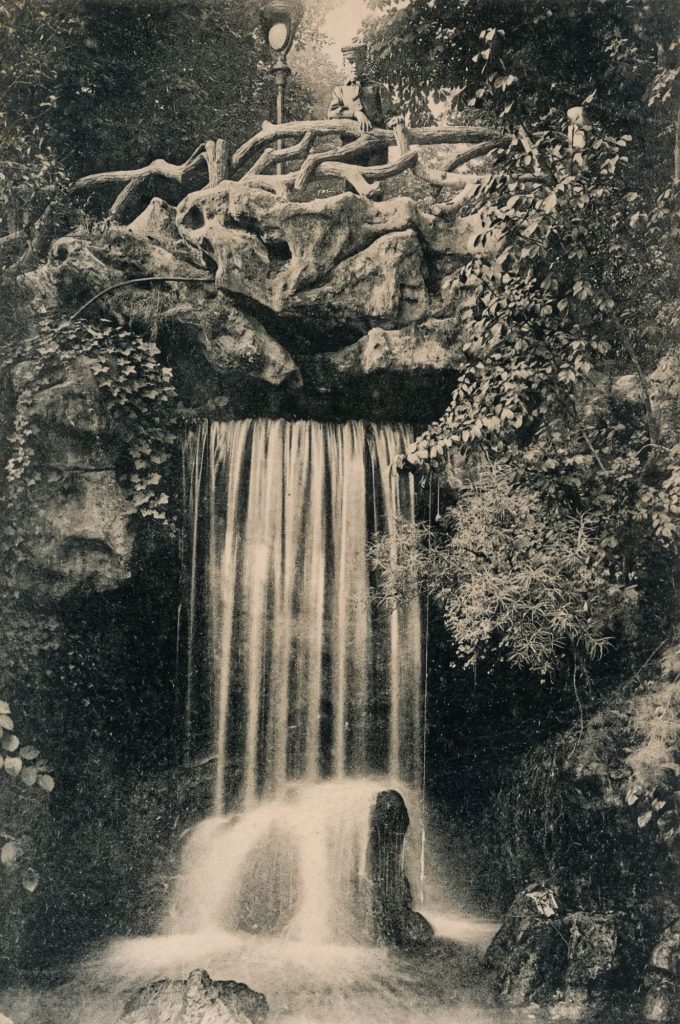
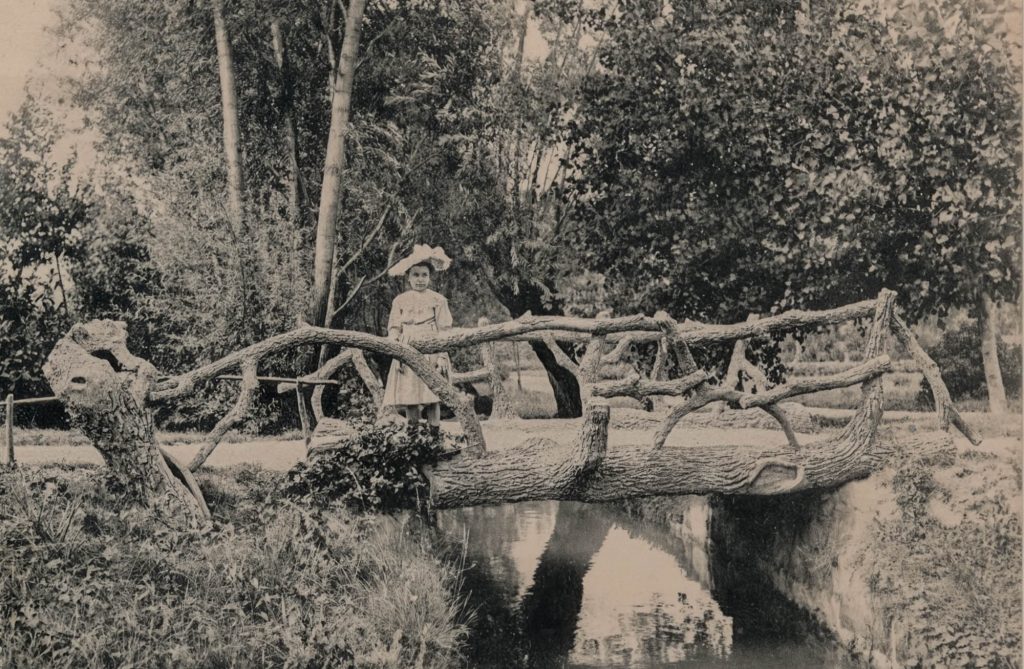
Armed with this influx of government cash, they set out to make fantastical gardens with amazing structures. Faux bois played a significant role in fulfilling their vision. They loved the idea that railings and bridges could be made to look like tree branches without the problems of actual wood’s rapid decay. They realized that properly constructed concrete faux bois, whether architectural elements or furniture, could last outside for many decades.
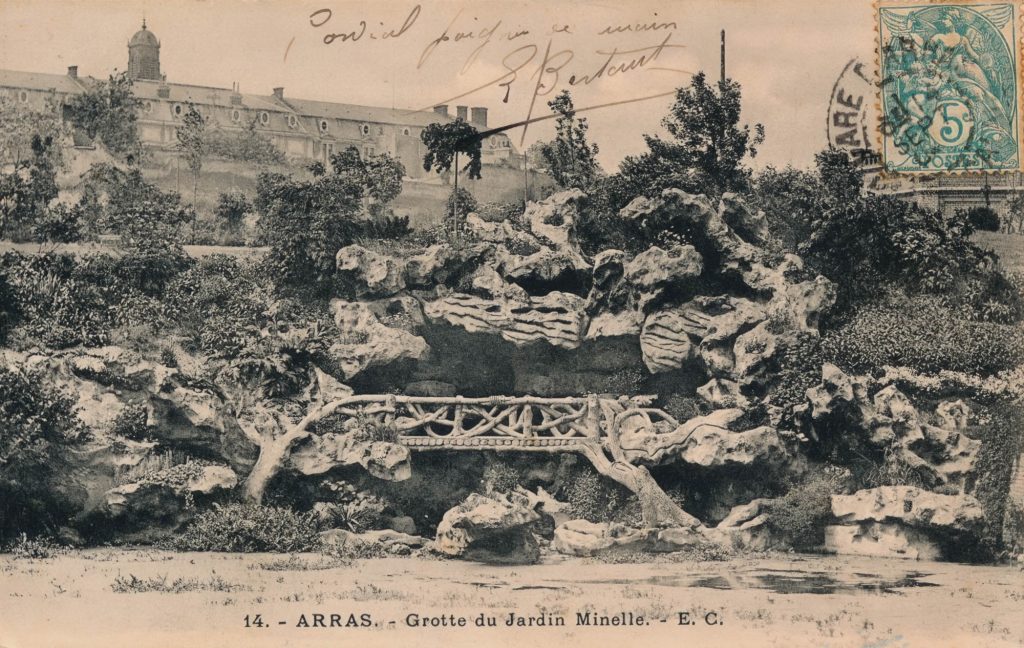
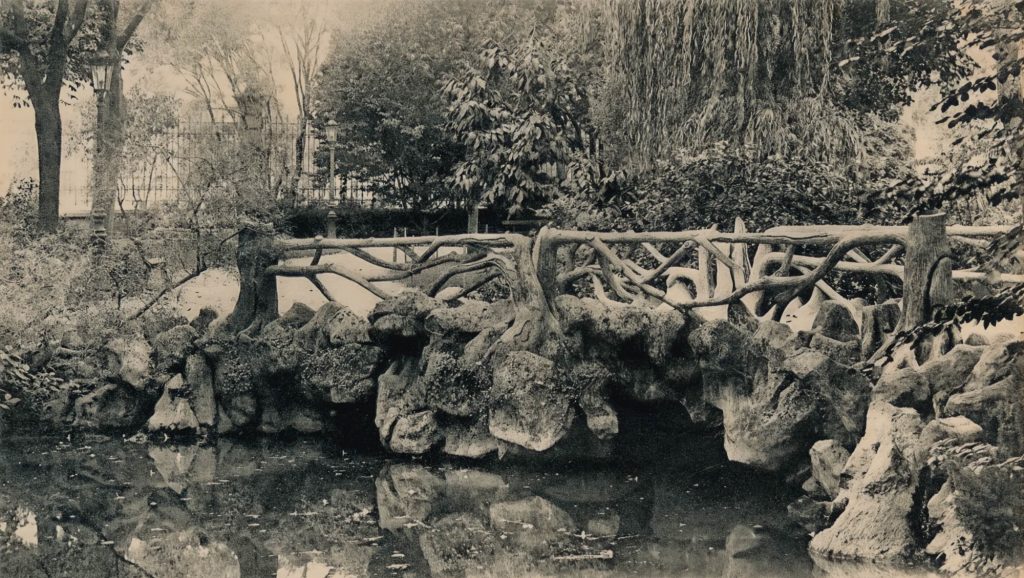
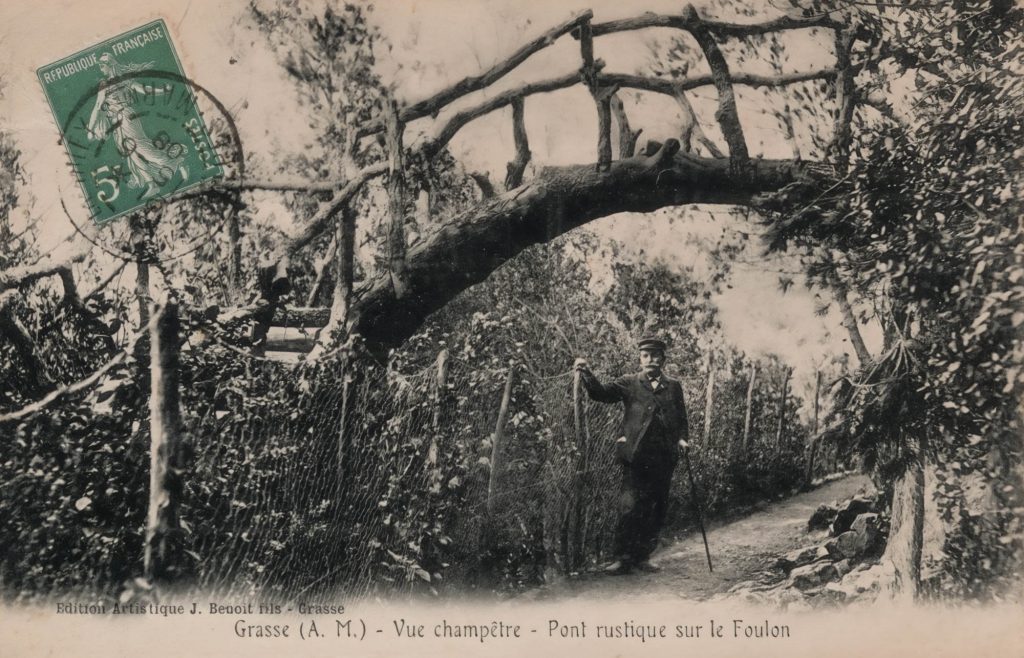
Faux Bois’ rise in popularity in Europe
In the late 1800s up until the turn of the century, many concrete faux bois bridges, stairs, walkway railings, benches, tables, and other structures were placed in public parks mostly in France and to a lesser extent in Belgium. Some examples have also been seen in parts of Spain and Italy.
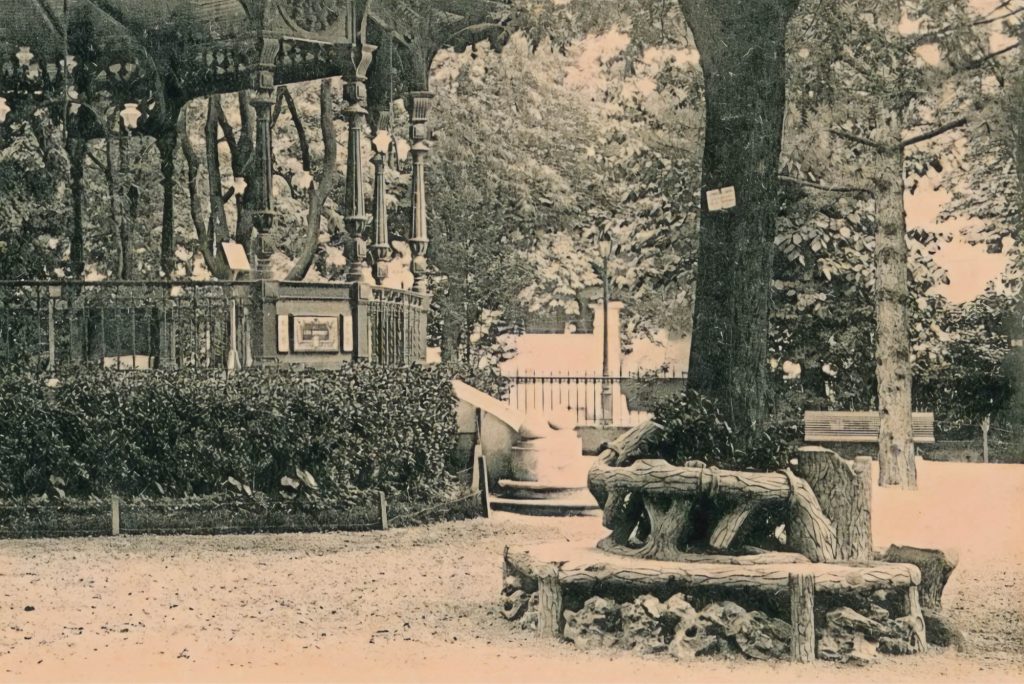
The prosperity that came with roaring economy in the late 1800s up until the early years of the 20th century led to the rise of the “nouveau riche.” They dreamed of buying second home in the country to escape the congestion and madness of big city life. When they strolled through these Parisian parks and saw all of the amazing faux bois, they wanted it for the gardens of their country homes and châteaux.
Faux bois artist studios popped up throughout France and Belgium. They built faux bois not only for public spaces, but also for these newly prosperous urban escapees.
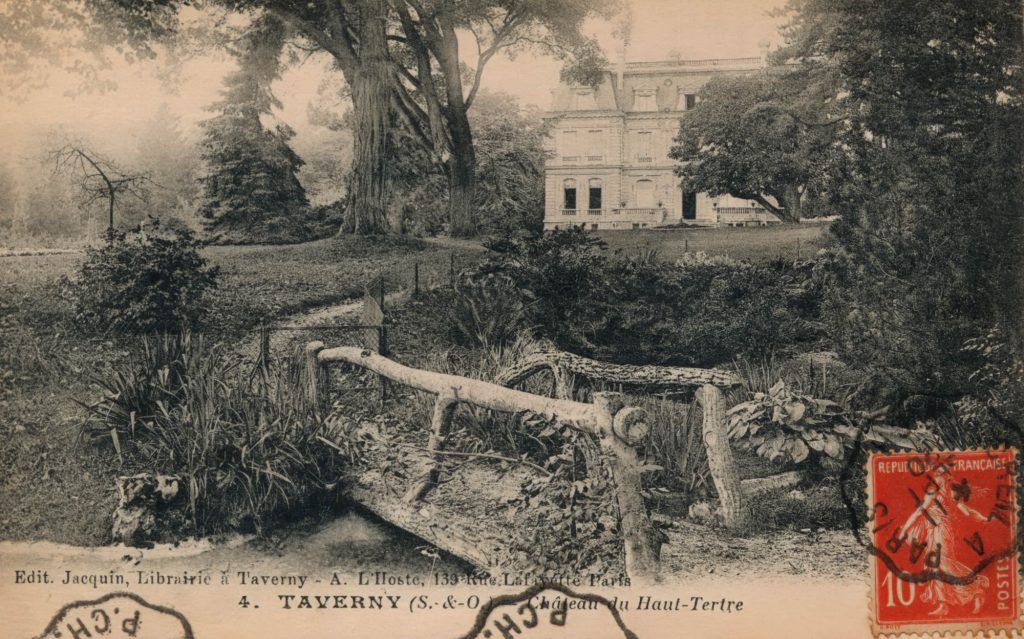

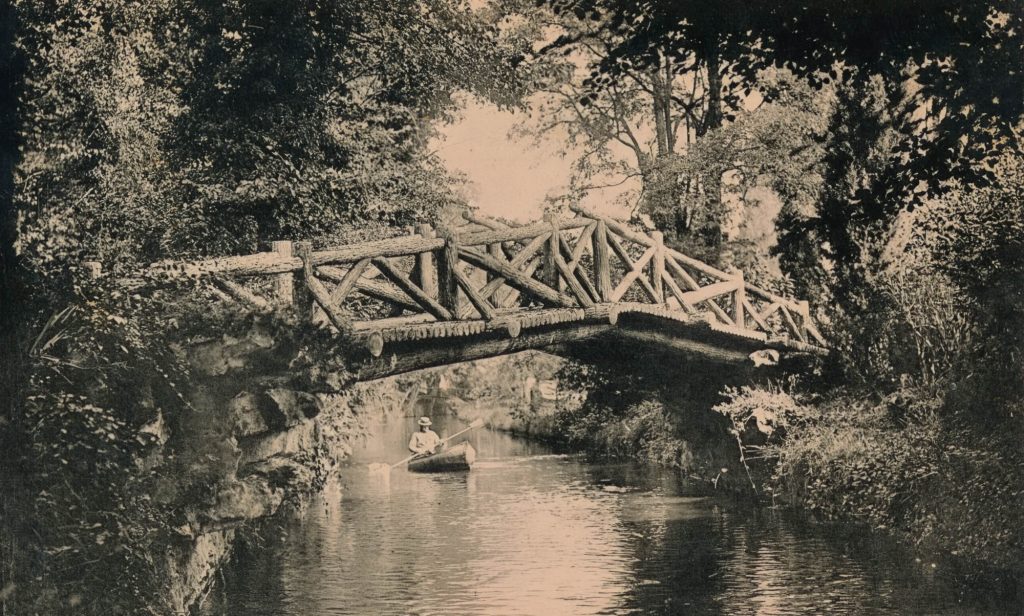
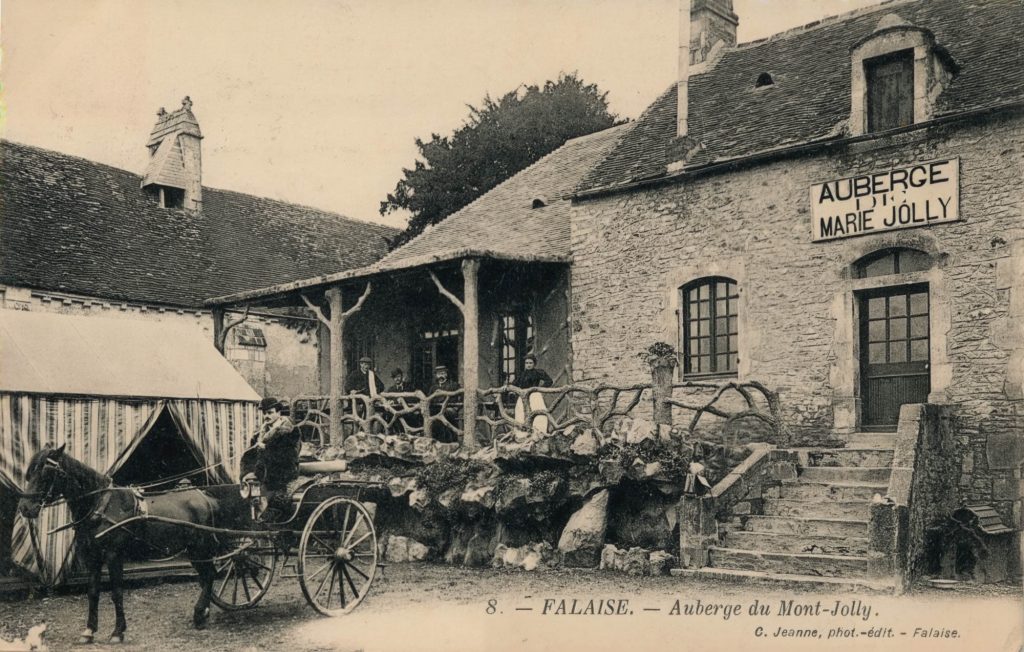
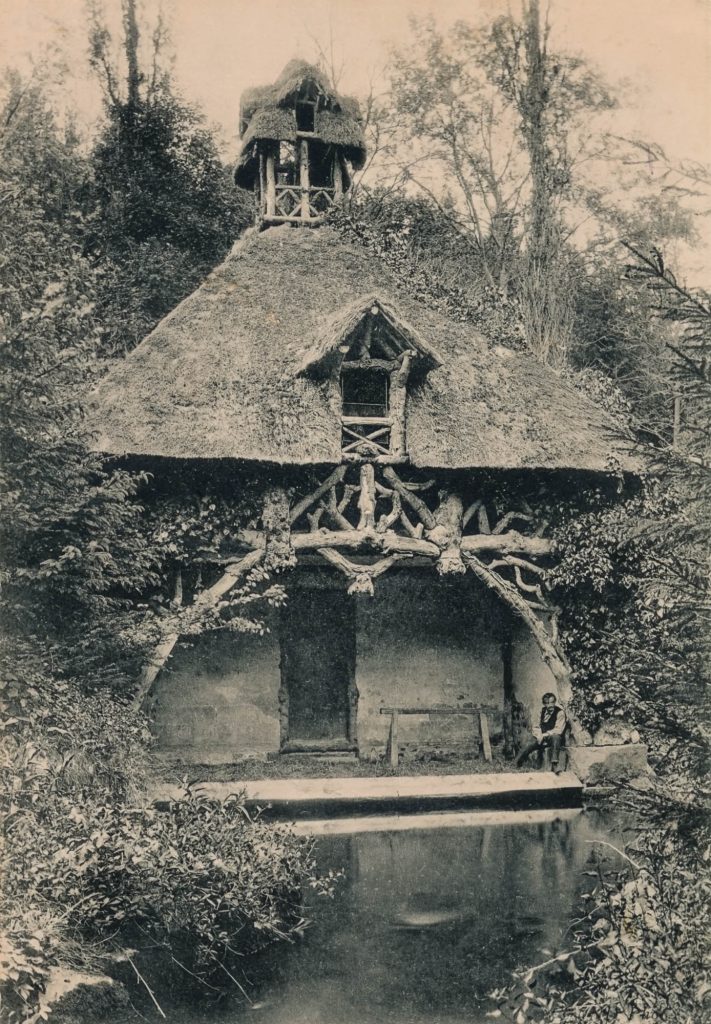
Homeowners embraced everything faux bois and adorned their houses and “secret” gardens with fanciful railings, balconies, and fences. Though their city home might have had formal gardens, they wanted their country homes to look and feel natural, comfortable, and somewhat rustic. It was a place to dream, read, write poetry and love letters, entertain and relax.
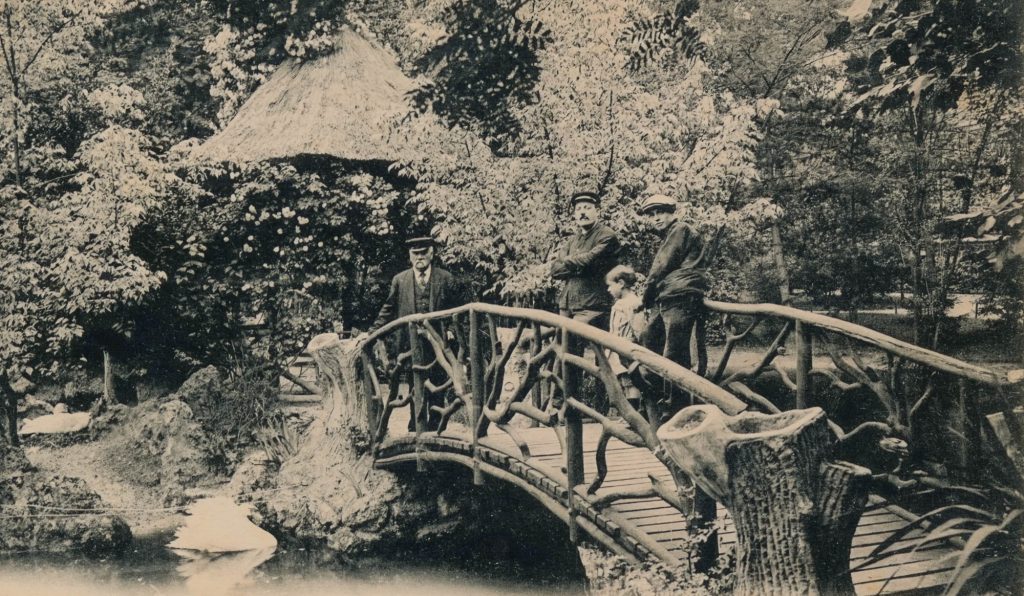
Fantasy and whimsy were always welcome. After all, this was their “happy place”. They would dine like happy peasants in their gardens, enjoying wine, bread, and cheese on their faux bois benches, tables and chairs.
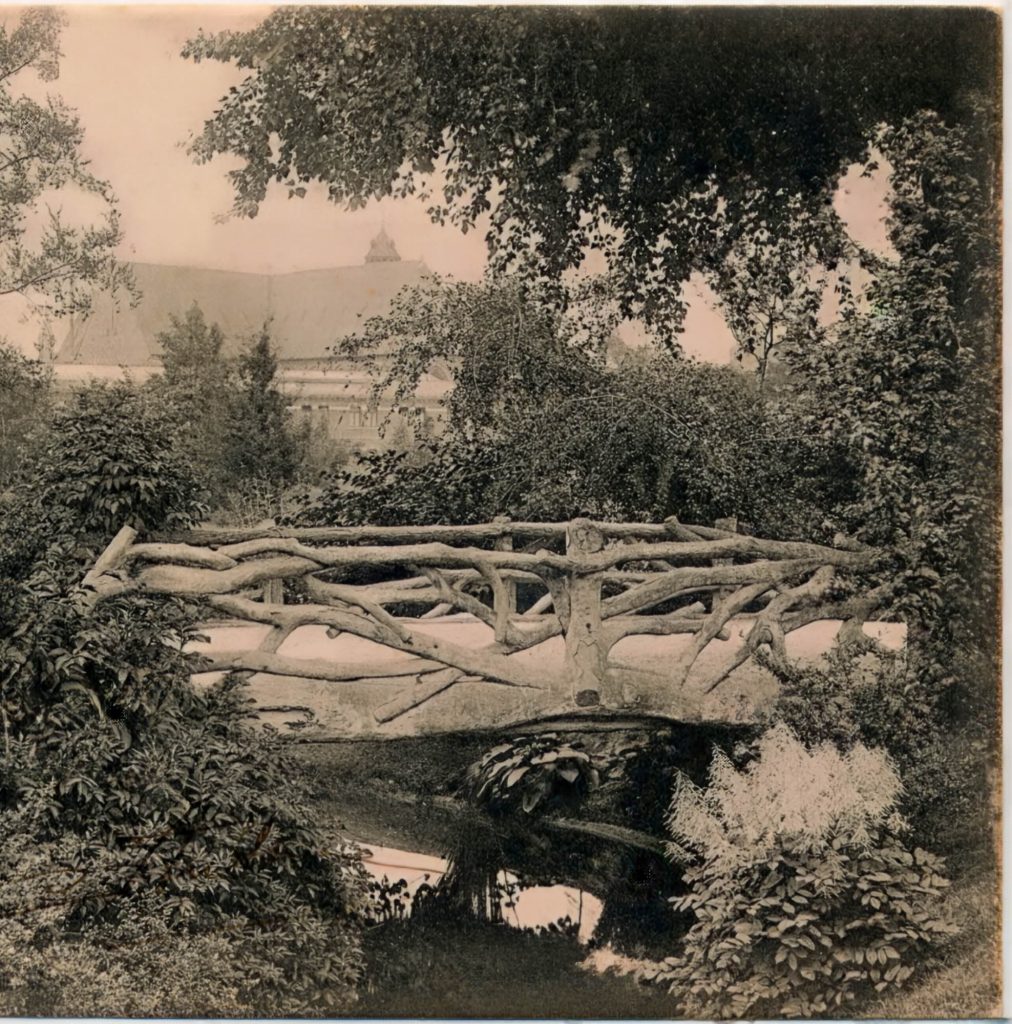
The Decline of Faux Bois
At this point, you’ve seen many rare and beautiful pictures of historic faux bois and you’re probably wondering how this charming art form could vanish so suddenly from the European zeitgeist.

The reasons are many and complex. It comes down to the fact that even though faux bois was based on new materials and construction technologies, it appeared to be from a world that was on its way out. Faux bois was born during the Belle Epoque, when optimistic, exuberant art and personal luxuries were all the rage. It thrived during the Art Nouveau Movement when nature was a major source of creative inspiration and classical artifice was being rejected. Shortly after the turn of the 20th century, an undeniably Modern movement was knocking at the door ready to sweep away everything that came before it.
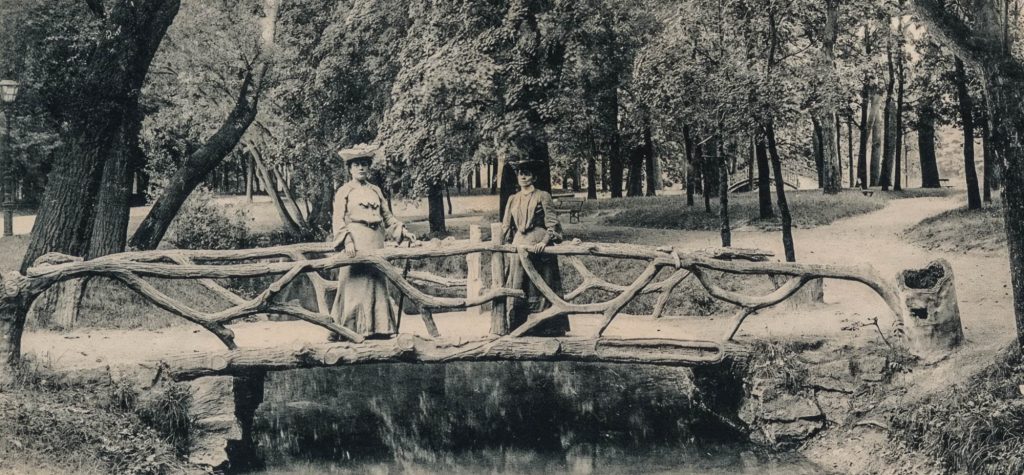
Living in the Modern World
By the early 1900s, the winds of change were coming to Europe. Major advances in science, medicine, communications, and transportation had ushered in new technologies like electricity, telephones, automobiles, and airplanes. People were excited about this new modern world. They not only wanted to own and use these modern conveniences, but they also wanted things to look modern. Rustic, ornate, and romantic objects began to seem passé.
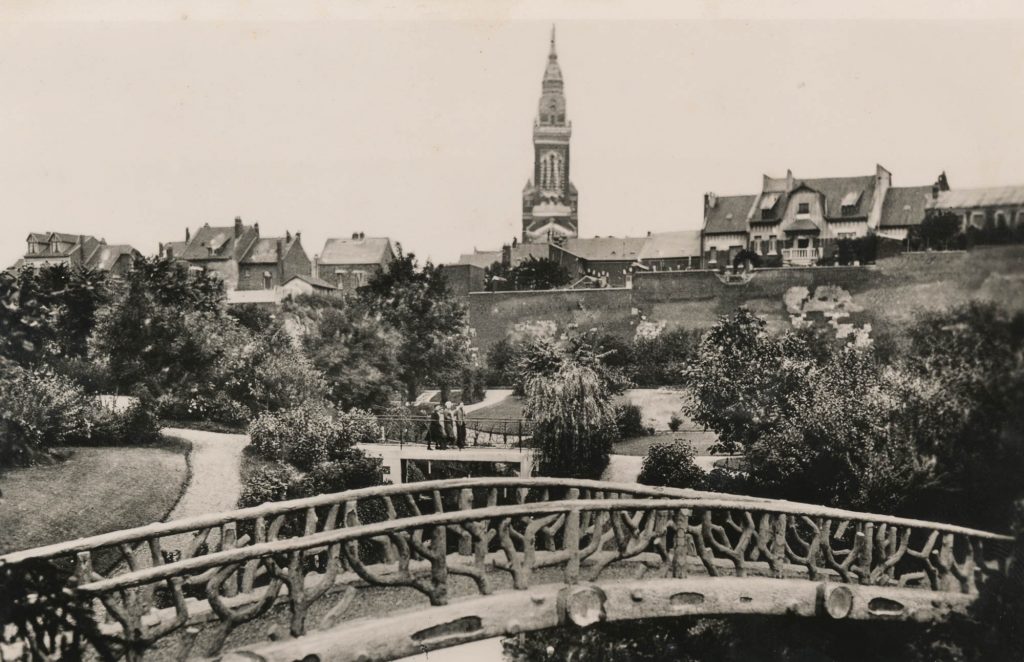
The dark side of the Modern world came calling in 1914 when World War I, the first “modern” war with all its modern technological horrors, brought a wrecking ball to Europe. It devastated the landscape, robbing millions of people of their lives and their dreams. Optimism and hope in a brighter future gave way to cynicism and disillusionment. Artists and writers reflected the new surreal and dystopian reality in their sculptures, paintings, and books.
Faux bois, born out of a quest for nature, fantasy, and tranquility, was not part of that angry, nihilistic conversation. After the war ended in 1918, Art Deco’s slick, manmade aesthetic took the design world by force, as if pronouncing that the competition of whether design inspiration should come from nature or machines had been settled. The machines had won! From that point on, the demand for faux bois in Europe declined drastically. The Golden Age of French faux bois, which had lasted about 50 years, came to an unceremonious end.
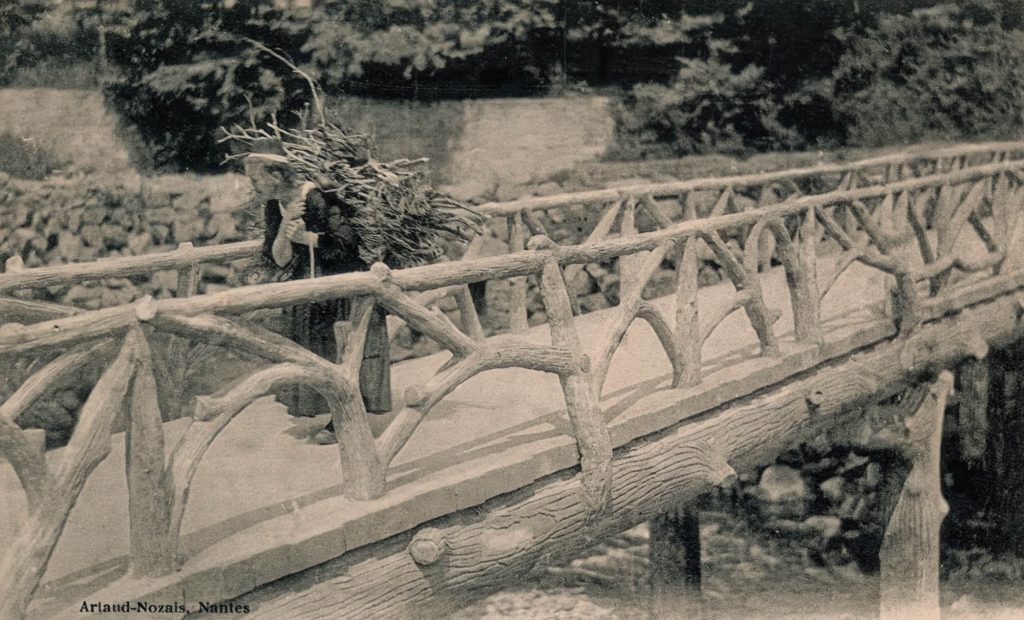
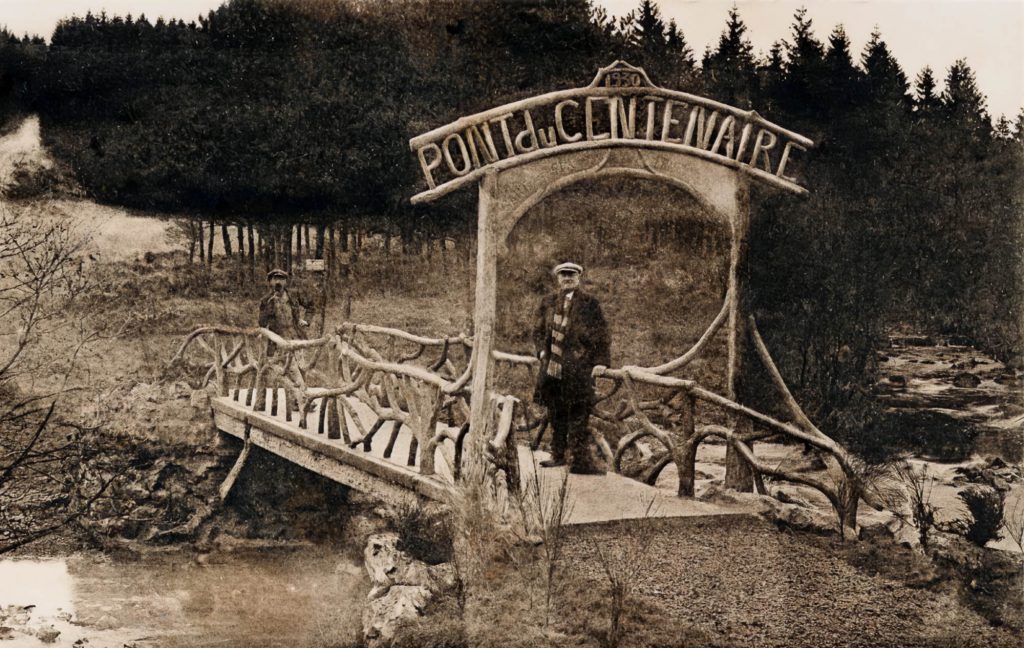
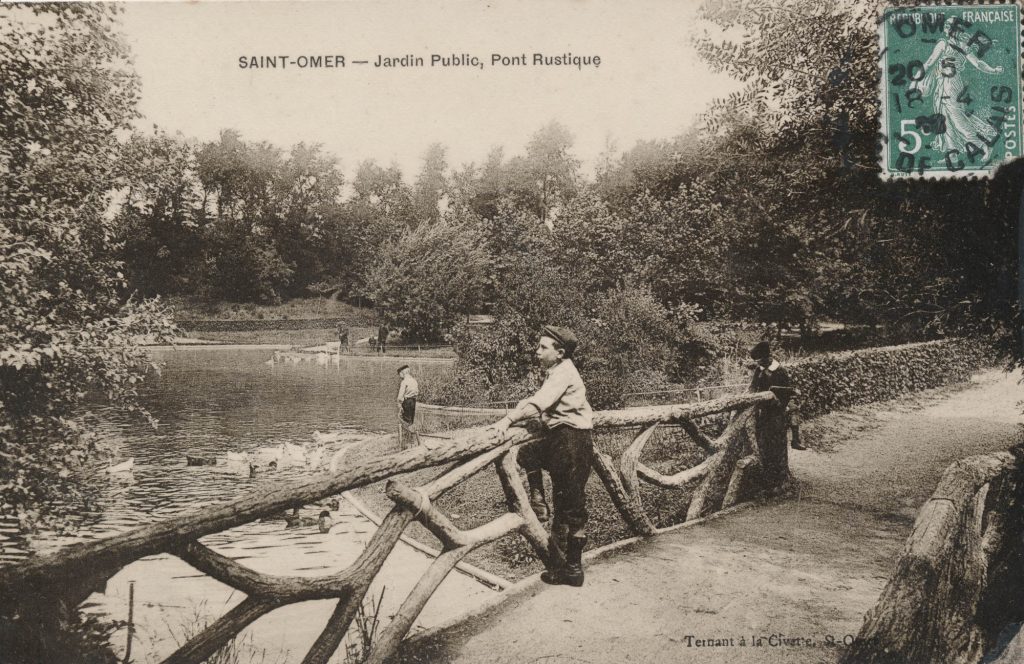
Is Faux Bois making a comeback today?
I was asked by a Wall Street Journal design columnist why I thought the faux bois style of furniture and décor was so popular now. I had to stop and think about that one. The reasons are many:
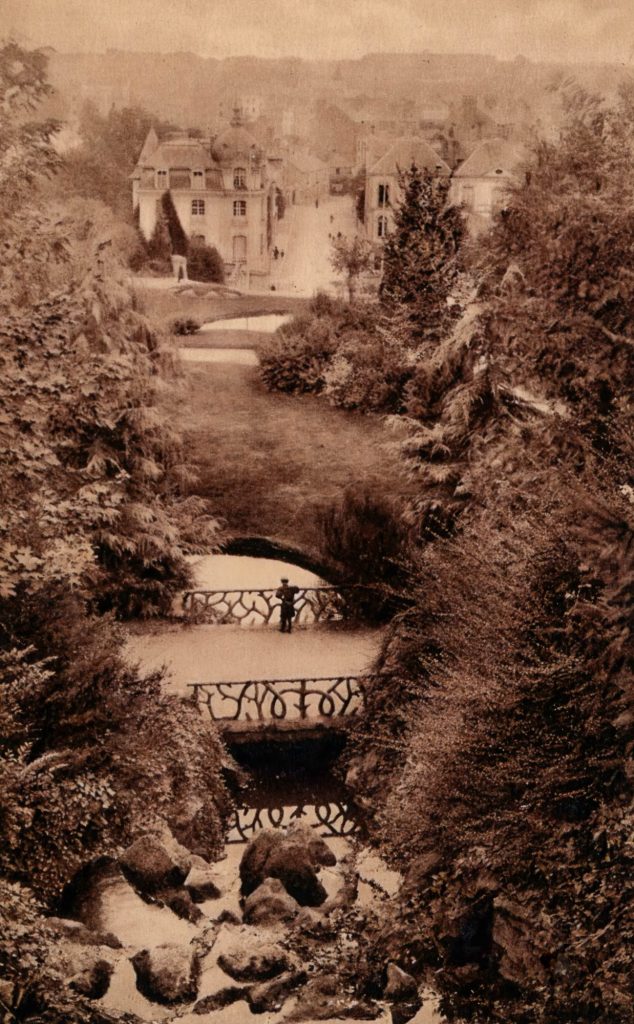
Nature heals and brings joy
Back in the day, people might have been mesmerized by new technologies, but today, we view smartphones, laptops, and new apps as tools that make our lives more convenient and efficient. Technology helps us earn a living and connect with others so we can have more time to pursue what we love. Gadgets are fun, but they can never replace all the things (including nature) that nurture our souls and spirits. Even scientists have proven that nature has healing qualities, which is why you see so many hospital walls and filled with artful depictions of landscapes, forests, waterfalls, and flowers.
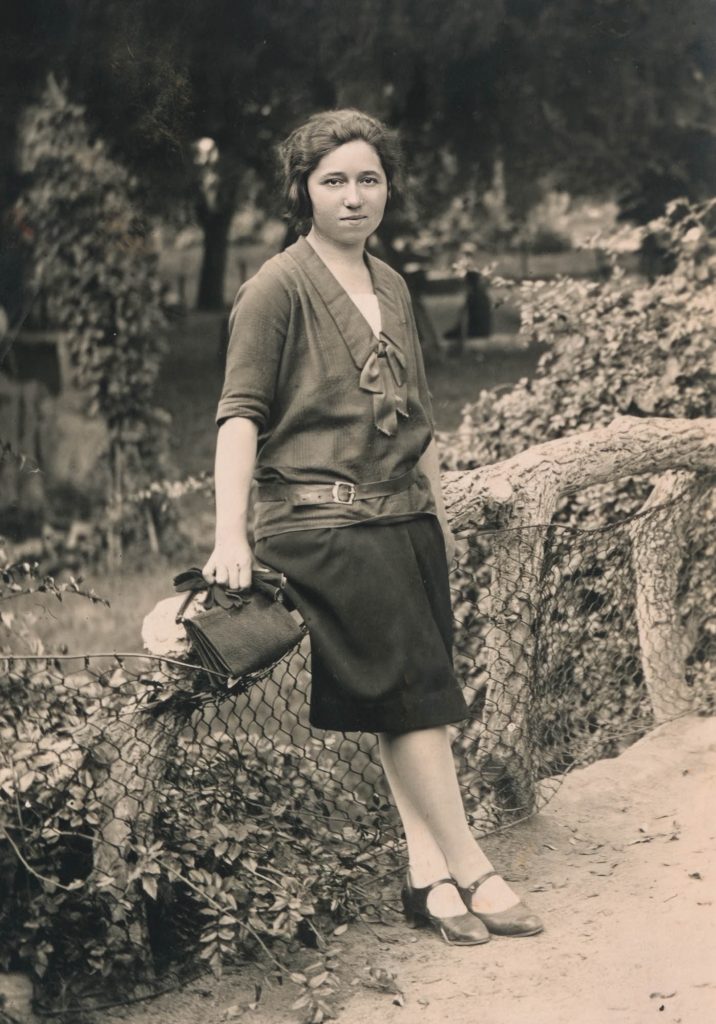
I think nature motifs, including faux bois, will always be popular when people feel free to decorate their homes and gardens in an eclectic way, surrounding themselves with meaningful things that bring them joy.
People still want peace
Human desire for peace and tranquility has not changed in the past 150 years. Many city dwellers still want comfortable, casual homes in the country to which they can escape on the weekends. They want these special dwellings to reflect their love of nature and are choosing specific furniture pieces that reflect their vision of a “secret garden” getaway. This is true of many of my clients who commission custom faux bois pieces.
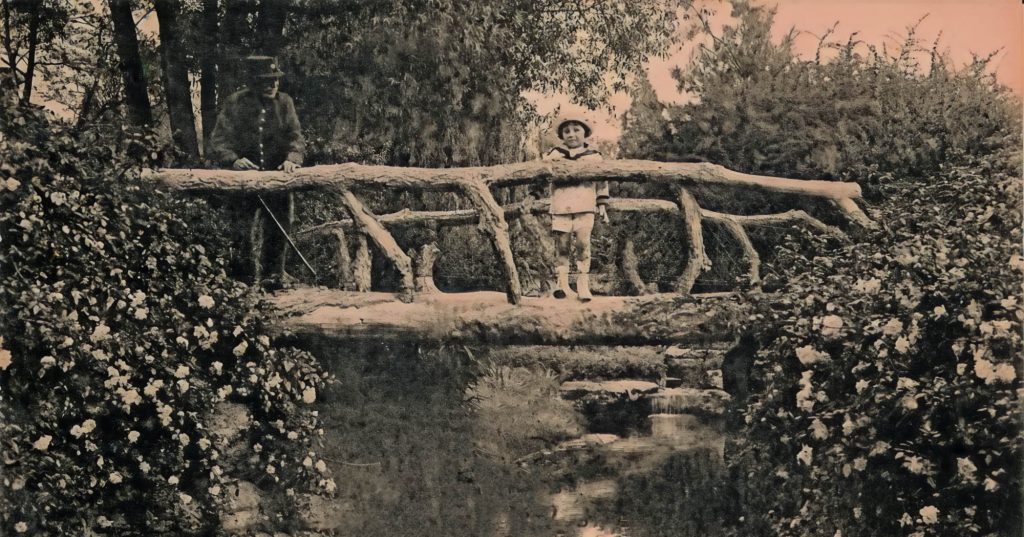
A growing awareness of faux bois
A new awareness of faux bois has grown because of the internet and social media. In recent years, prominent interior designer influencers have collected both new and antique pieces for their own homes and gardens. They have talked about it extensively in magazine articles, books, and videos, and on social media. When images of faux bois show up in the media, it helps to fuel even more public interest in this little-known and unique art-form.
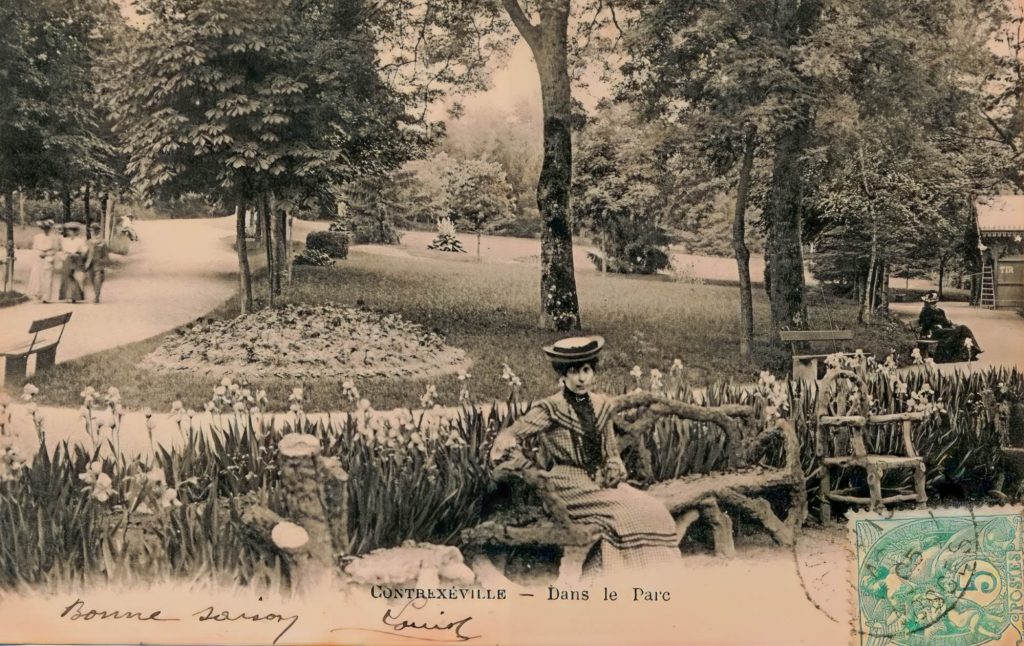
Old French faux bois vanishing again?
Antiques dealers have been importing 100+ year-old French faux bois furniture and garden décor for decades, and it has been snapped up by enthusiastic buyers in the United States. However, that is coming to an end. A prominent garden antiques dealer recently informed me that France is all but “shopped out” when it comes to antique faux bois garden furniture and decor. Unfortunately, from now on, these French faux bois treasures are a going to be very difficult to find.
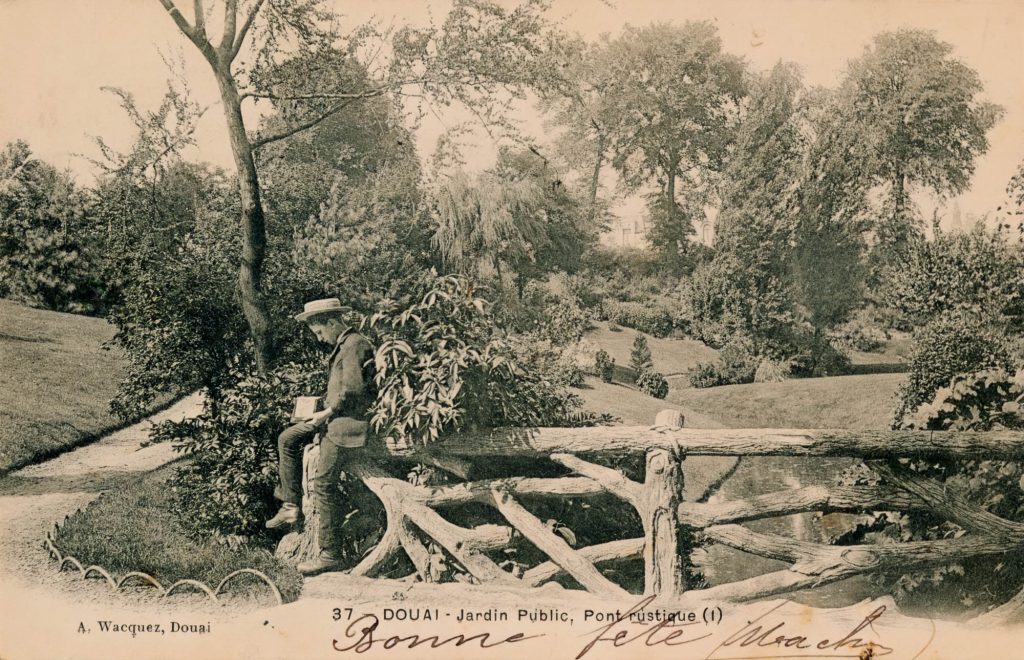
The Faux Bois spirit lives on
The faux bois art form has always found a home among those who dream of peaceful gardens and want to live in harmony with nature. For that reason, I think that the true spirit of faux bois is just as relevant now as it was 150 years ago. I am a huge fan of vintage French faux bois and am honored to carry on this tradition more than 100 years later, in my own style, using the latest in cement technology.
In researching images for this article, I came across a breathtaking array of styles and artistic expressions. Some of the faux bois creations featured in these photos no longer exist. Some have been restored and can be enjoyed today.


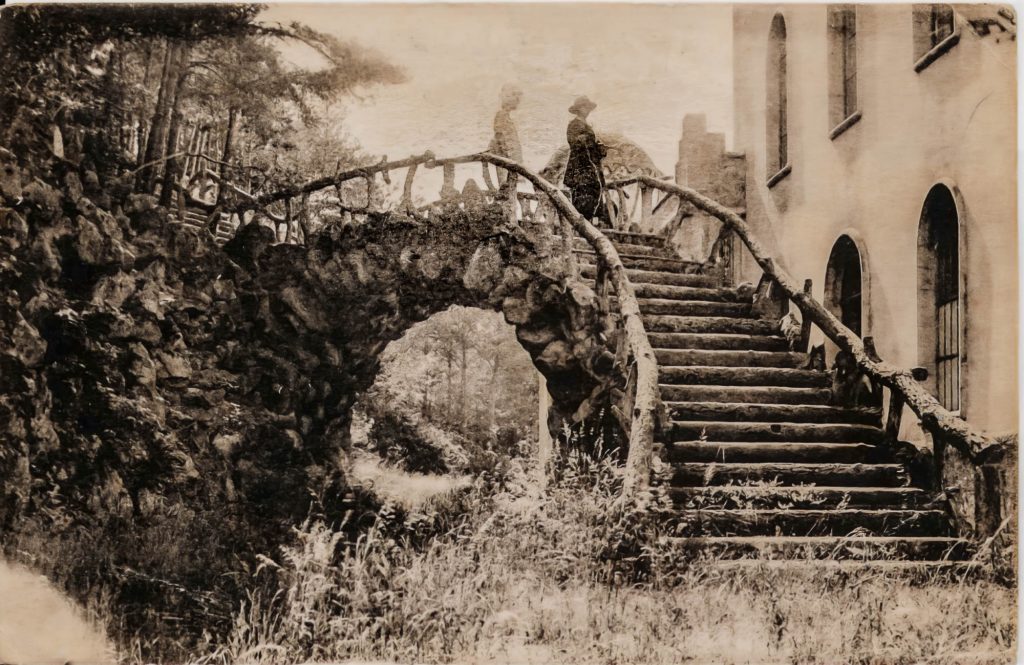
If you visit Paris, you can still see beautiful faux bois stairways and railings in Parc Montsouris, Buttes Chaumont and Square St-Pierre. If you explore the many beautiful towns in France, keep your eyes open: You’re bound to see relics of the past—perhaps a faux bois balcony railing, or a bridge. If you ask the local residents, they’ll probably be happy to point out some amazing faux bois from the distant past that isn’t mentioned in your travel guides.
If you’ve traveled to France and have seen any of these faux bois landmarks, please leave a comment to share your experience with the other faux bois loving readers of this blog!
